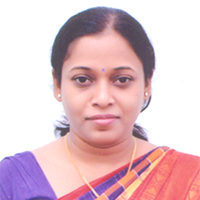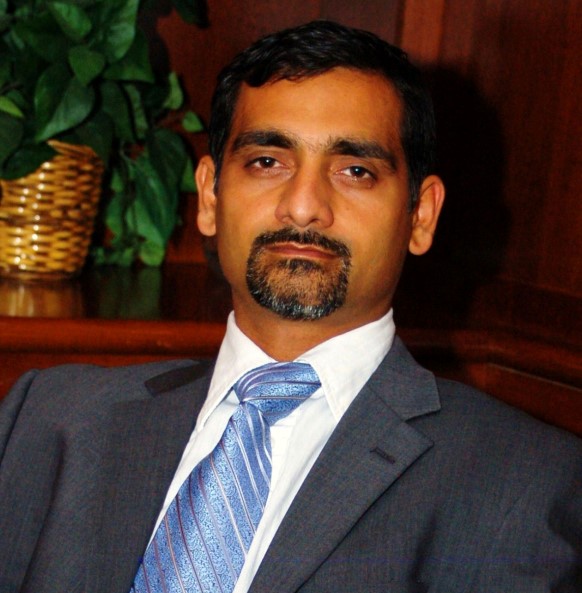By Sudipa Chauhan, Payal Rana, and Anuj Mubayi
The COVID-19 pandemic continues to demonstrate both the critical role of an effective host immune response and the devastating consequence of immune dysregulation. Untangling the mechanisms of positive and negative immune responses to SARS-CoV-2 remains a major task in the medical field. The term “cytokine storm” collectively refers to inflammatory disorders that result from the sudden hyperactivation of a patient’s immune response; such hyperactivation is often triggered by the pathogen itself, various therapies, or preexisting health conditions. Medical practitioners disagree on the definition of a cytokine storm and the way in which these disorders differ from appropriate inflammatory responses.
What Are Cytokines, and What Triggers Cytokine Storms?
The COVID-19 infection process can exhibit a range of clinical manifestations that span from asymptomatic infections to mild, moderate, and finally severe (roughly 15 percent in unvaccinated individuals) and critical infections [3]. The latter sometimes even requires hospitalization in the intensive care unit due to acute respiratory distress syndrome (ARDS) or multiple organ failure (MOF). Coronavirus typically infects the respiratory epithelial cells, dendritic cells, and certain types of macrophages [1].
Inflammation plays an essential role in the elimination of infection. Cellular infection and virus replication activate the inflammatory response, which leads to the release of proinflammatory cytokines (such as IL-6, IL-8, TNF-α, and IL-1β) and provides an amplified inflammatory reaction. These cytokines subsequently send signals and activate natural killers that comprise innate immune cells and adaptive immune T lymphocytes/T cells. The T cells further activate B lymphocytes/B cells, which produce antibodies like IgM and IgG.
Cytokines help maintain a balance between innate and adaptive immune responses, thereby playing a crucial role in the body’s first and second lines of defense and expediting the recovery process. However, cytokine response can sometimes become exaggerated for various reasons and damage the body. When the inflammatory immune response commences, the virus mediates the recruitment of immune cells to kill the pathogens and repair infected tissue. But in the case of a cytokine-related uncontrolled response—known as cytokine release syndrome or cytokine storm—the cytokines begin to attack healthy cells as well. In COVID-19 patients, exaggerated proinflammatory cytokines initiate different inflammatory signaling pathways via their receptors on immune cells, which produces complicated medical symptoms. This cytokine storm can lead to ARDS or MOF in critically ill patients.
Physicians often use certain cytokine inhibitors—such as tocilizumab, baricitinib, and anakinra—as anti-inflammatory therapies for critically ill COVID-19 patients [6]. However, there is a lack of information about the use of these various treatments to control cytokine storms. The control effort of cytokine inhibitors limits tissue damage and the death of healthy cells.
Previous math models of in-host systems discuss the host dynamics of SARS-CoV-2 systems and their interactions with immune responses [4, 5]. These studies attempt to understand the impact of different treatments on various stages of infection and immune response, but they do not examine the feedback mechanisms that are associated with cytokine storms.
Our Focus and Data Analysis
Our study focuses on the role of mechanisms that trigger cytokine storms and the ability of different immunotherapies to alter these mechanisms in COVID-19 patients. Such mechanisms can also help researchers uncover some of the challenges that are associated with immunocompromised patients and vaccinated individuals. We address important questions that pertain to the cytokine storm’s impact on SARS-CoV-2 progression in a patient and suppressed infection transmission due to activation of the cytokine-mediated immune response [7].
The presence of a COVID-19-related cytokine storm during advanced stages of infection—often days or weeks after initial infection—raised the possibility of early mitigation strategies with anti-cytokine treatments. We obtained data on cytokine load (serum level of IL-6, IL-8, TNF-α and IL-1β) in different stages of infection among severe COVID-19 patients from a prior study [2]. The data set included 1,422 independent samples of patients who were admitted to the New York’s Mount Sinai Health System with respiratory COVID-19-related symptoms and positive RT-PCR tests. We used this data to estimate several important parameters, such as the rate at which cytokines are produced, the average life span of different types of cytokines, and the strength of immunosuppression. Fitting the model to the time series of cytokine abundance allowed us to indirectly estimate these parameters; we acquired the remaining fixed model parameters from the existing literature [4]. Because some of the parameters could not be obtained precisely, we then carried out parameter sensitivity analysis. We also used a simple optimal control problem via the linear feedback method to compute parameters that are related to immunomodulatory therapies for the control of cytokine storms.
Figure 1. Biological process of COVID-19 infection and immune responses. Figure courtesy of the authors.
Our Modeling Framework
Figure 1 offers a visual depiction of our model and mechanisms, which are also described with the following system of equations:
\[\frac{dH}{dt}= \underbrace{\Delta}_{\begin{array}{c}\text{rate of production} \\ \text{for healthy cells} \\ (\text{targeted epithelial cells})\end{array}} -\underbrace{\Upsilon H V-p_{1}NH-p_{2}TH}_{\begin{array}{c}\text{reduction in healthy cells due to} \\ \text{virus, natural killer, and T cells} \\ \text{because of cytokine impact}\end{array}} -\underbrace{\mu_{H} H}_{\begin{array}{c}\text{natural death rate} \\ \text{of healthy cells}\end{array} }\]
\[ \frac{dI}{dt}= \underbrace{\Upsilon H V}_{\begin{array}{c}\text{conversion term} \\ \text{from healthy} \\ \text{to infectives}\end{array}} - \underbrace{\mu_{I}I}_{\begin{array}{c}\text{natural death} \\ \text{of infectives}\end{array}}-\underbrace{p_{3}TI-p_{4}NI}_{\begin{array}{c}\text{reduction in infectives due} \\ \text{to T cells and natural killers}\end{array}}\]
\[\frac{dV}{dt}=\underbrace{s_{1}I}_{\begin{array}{c}\text{production} \\ \text{of new virus}\end{array}} - \underbrace{\mu_{V}V}_{\begin{array}{c}\text{natural death} \\ \text{of virus}\end{array}} -\underbrace{p_{5}CV-p_{6}AV}_{\begin{array}{c}\text{reduction in virus} \\ \text{production due to} \\ \text{cytokines and antibodies}\end{array}}\]
\[ \frac{dC}{dt}= \underbrace{\frac{s_{2}I}{1+\beta V}}_{\begin{array}{c}\text{activation of cytokines} \\ \text{due to cellular infection} \\ \text{and viral replication, along} \\ \text{with immunosuppression}\end{array}}-\underbrace{\mu_{C}C}_{\begin{array}{c}\text{natural death rate} \\ \text{of cytokines}\end{array}}\]
\[ \frac{dN}{dt}= \underbrace{rC}_{\begin{array}{c}\text{activation of} \\ \text{natural killers} \\ \text{by cytokines} \end{array}}- \underbrace{\mu_{N}N}_{\begin{array}{c}\text{natural death} \\ \text{rate of natural} \\ \text{killer cells}\end{array}}\]
\[\frac{dT}{dt}=\underbrace{\eta_{1} C T}_{\begin{array}{c}\text{activation of} \\ \text{adaptive immune T} \\ \text{cells by cytokines}\end{array}} - \underbrace{\mu_{T}T}_{\begin{array}{c}\text{natural decay} \\ \text{rate of T cells}\end{array}}\]
\[\frac{dB}{dt}=\underbrace{\eta_{2} TB}_{\begin{array}{c}\text{activation of B} \\ \text{cells by T cells}\end{array}} - \underbrace{\mu_{B}B}_{\begin{array}{c}\text{natural decay} \\ \text{rate of B cells}\end{array}}\]
\[\frac{dA}{dt}=\underbrace{k B}_{\begin{array}{c}\text{production} \\ \text{of antibodies} \\ \text{by B cells}\end{array}} - \underbrace{\mu_{A}A}_{\begin{array}{c}\text{natural} \\ \text{decay rate of} \\ \text{antibodies}\end{array}} -\underbrace{p_{7}AV.}_{\begin{array}{c}\text{neutralization} \\ \text{of antibodies} \\ \text{by virus}\end{array}}\]
A key mechanism is the activation of cytokines \(C(t)\) due to cellular infection \(I(t)\) and viral replication, along with immunosuppression in the presence of virus \(V(t)\).
Results
In our model, the innate immune response constitutes the presence of cytokines \((C)\) and natural killer cells (\(N\) cells), while the adaptive immune response consists of \(T\) lymphocytes (T cells), \(B\) lymphocytes (B cells), and antibodies \((A)\). The model has four steady states: (i) Healthy state with no SARS-CoV-2 infection \((E_0)\); (ii) infection state without SARS-CoV-2-specific innate and adaptive immune responses \((E_1)\); (iii) infection state with only SARS-CoV-2-specific innate response \((E_2)\); and (iv) infection state with full immune response, both innate and adaptive \((E_3)\).
Figure 2. Change in \(H\) population over time during cytokine inhibition treatment. Figure courtesy of the authors.
\(E_1\) and \(E_2\) are always unstable, suggesting that the situation without a SARS-CoV-2-specific immune response in COVID-19 patients is extremely short-lived and thus less likely. Moreover, the stability of \(E_0\) and \(E_3\) depends on the average number of free viruses that result from the death of infected cells \(X\). That is, infected state \(E_3\) emerges when \(X>X_\text{cri}\) and \(X_\text{cri}=\frac{\mu_V\mu_I\mu_H}{\Upsilon\Delta}\) (note that \(X_\text{cri}\) is a critical size of the \(s_1\) parameter); otherwise, an infection cannot establish itself (\(E_0\) will be stable). When \(X>X_\text{cri}\) and infection is established, the overwhelming response of cytokines—which we evaluate via numerical simulations—allows for the severity of infection. In other words, infection is maintained—along with immune response (pro-inflammatory) and cytokine storm (hyper-inflammatory)—when the average number of viruses from infected cells is above its critical value. Thus, the key mechanisms that drive the establishment of infection in patients are natural mortality rates of viruses—and of infected and healthy cells—as well as infection and reproduction rates of healthy cells.
We found that the steady-state level \((H^*)\) of healthy cells is most sensitive to the two parameters that are associated with the killing rates of \(H\) by natural killer cells \((N)\) and T cells \((T)\); this result suggests a potential cytokine-triggered aggravated immune response as an essential mechanism for decrementation of healthy cells. Moreover, as cytokine levels \((C)\) drop due to cytokine inhibition drugs, the number of healthy cells \((H)\) increases significantly in normal patients — first slowly, and then much faster so that they eventually saturate themselves (see Figure 2).
With the use of cytokine inhibitors as a control, we also notice that cytokine level \(C(t)\) drops to a certain amount; this indicates a promising outcome from immunomodulatory therapy during the cytokine storm (see Figure 3). However, such an outcome is only possible when one applies controls sufficiently early in the post-infection stage. The data indicate that out of 317 laboratory-confirmed COVID-19 patients, baseline levels of inflammatory Il-6—one of the cytokines—were recorded at 33.5 for moderate patients, 6.3 for severe patients, and 3.8 for critically ill patients [8]. The cytokine level drops below the severe threshold quicker with the control than without it. The control can thus suppress the cytokine storm more rapidly, allowing the patient a chance of survival in severe cases or a better and faster recovery in mild cases.
Figure 3. Change in \(C\) population over time (with and without control), along with threshold levels for moderate, severe, and critical patients. Figure courtesy of the authors.
Future Work
One could enhance our study by testing model results with more detailed clinical data from a diverse set of countries with limited healthcare resources; doing so will reveal urgent therapeutic repurpose treatments. Our model can also be adopted to evaluate the role of a combination of immunomodulatory therapy and antiviral treatments to regulate cytokine storms and improve patient survival. Such details in within-host models will help researchers better understand the immunology and pathogenesis of SARS-CoV-2 and more efficiently address the COVID-19 pandemic.
References
[1] Castelli, V., Cimini, A., & Ferri, C. (2020). Cytokine storm in COVID-19: “When you come out of the storm, you won’t be the same person who walked in.” Front. Immunol., 11, 2132.
[2] Del Valle, D.M., Kim-Schulze, S., Huang, H.-H., Beckmann, N.D., Nirenberg, S., Wang, B., … Gnjatic, S. (2020). An inflammatory cytokine signature predicts COVID-19 severity and survival. Nat. Med., 26, 1636-1643.
[3] García, L.F. (2020). Immune response, inflammation, and the clinical spectrum of COVID-19. Front. Immunol., 11, 1441.
[4] Ghosh, I. (2021). Within host dynamics of SARS-CoV-2 in humans: Modeling immune responses and antiviral treatments. SN Comput. Sci., 2(6), 482.
[5] Hernandez-Vargas, E.A., & Velasco-Hernandez, J.X. (2020). In-host mathematical modelling of COVID-19 in humans. Annu. Rev. Control, 50, 448-456.
[6] Kim, J.S., Lee, J.Y., Yang, J.W., Lee, K.H., Effenberger, M., Szpirt, W., … Shin, J.I. (2021). Immunopathogenesis and treatment of cytokine storm in COVID-19. Theranostics, 11(1), 316-329.
[7] Rana, P., Chauhan, S., & Mubayi, A. (2022). Burden of cytokines storm on prognosis of SARS-CoV-2 infection through immune response: Dynamic analysis and optimal control with immunomodulatory therapy. Eur. Phys. J. Spec. Top., 1-19.
[8] Zeng, Z., Yu, H., Chen, H., Qi, W., Chen, L., Chen, G., … Wu, D. (2020). Longitudinal changes of inflammatory parameters and their correlation with disease severity and outcomes in patients with COVID-19 from Wuhan, China. Crit. Care, 24(1), 525.
 |
Sudipa Chauhan is an associate professor in the Department of Mathematics at the Amity Institute of Applied Science of Amity University, Noida in India. Her expertise is in infectious disease modeling as well as modeling of pest management. |
 |
Payal Rana is a research scholar at Amity University, Noida in India. Her research interests include mathematical modelling in epidemic models and dynamics. |
 |
Anuj Mubayi is an Infectious Disease Tech Lead in The Public Health Company. He is also a Distinguished IBA Fellow in the Center for Collaborative Studies in Mathematical Biology at Illinois State University, a senior fellow at the Kalam Institute of Health Technology in India, and an adjunct faculty member in the Department of Mathematics and Computer Science at the Sri Sathya Sai Institute of Higher Learning in India. Mubayi's expertise is in health decision science as well as infectious disease modeling and dynamics. |